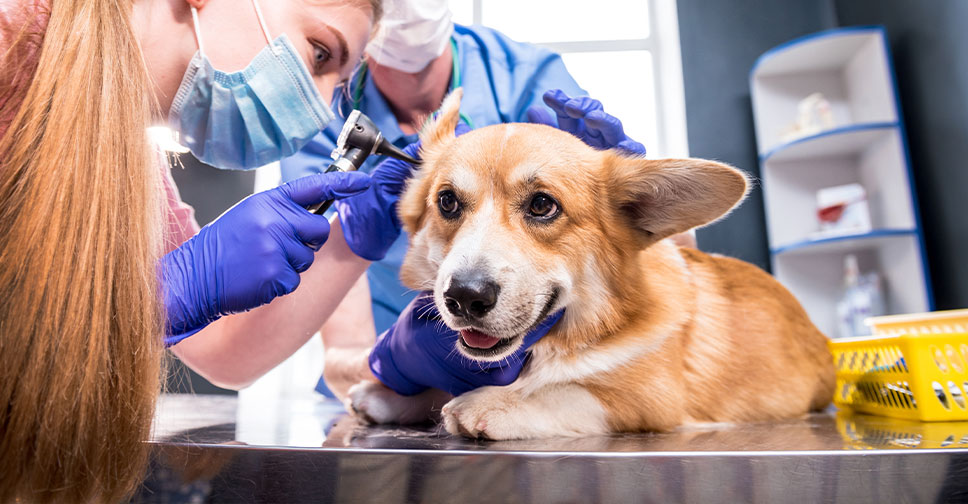
Ear infections in dogs
What causes ear infections in dogs?
Dogs have very long ear canals which is why the earpieces we use to look down them are much longer than human ones. At the base of the ear canal (“outer ear”) lies the ear drum.
It is not fully understood why some dogs are more prone to ear infections but some of it may be that the ear canals are warm, moist, dark places that can be the perfect breeding ground for yeast and bacteria. Dogs with floppy ears can be more susceptible, and lifestyle can have an influence – dogs that swim in a river or beach sometimes end up with infections.
However, many dogs with hairy, floppy ears who love swimming never get any infections, so we sometimes must look a little further.
Inflamed skin is more prone to infection than healthy skin.
Dogs with underlying allergy issues have red and inflamed skin that is a less effective barrier against bacterial growth. We often call these dogs “foot chewers and face rubbers” because they show these behaviours. The rubbing makes the dogs more likely to get foreign bodies (e.g. grass seeds) in their ears which lead to irritation and infection.
Dogs with bilateral (both ears affected) ear infections are more likely to have an underlying allergic cause of their ear infections and your vet will likely speak with you about doing a food allergy trial as a first “rule out”.
Some dogs are very sore or ear shy and the only way for us to examine the ears is under sedation or general anaesthetic. This is costly, but we need to be sure we don’t have ruptured ear drums or foreign bodies (e.g. grass seeds) which change our treatment plan.
Why does treatment vary sometimes?
Ear infections are generally either bacterial or yeast based. Some infections are caused by ear mites, but this is less common these days. There are many different types of bacteria, and this means that different antibiotic drops (and/or oral antibiotics) may be required.
We frequently look at bacteria under the microscope to ensure we are using the appropriate antibiotics. Certain types of bacteria are more likely to be resistant to antibiotics and if we suspect these, your vet will usually request a “culture and sensitivity” test to be sent to an external laboratory. This costs around $250-300 per ear but is a very important diagnostic test. There is a worldwide problem with antibiotic resistance and we are needing to do these tests more regularly in general for all types of infection.
Why are revisits important?
Attending all revisits requested by your vet is important because sometimes your dog may improve clinically but the infection hasn’t fully cleared and has a high chance of flaring again without extended treatment. The more often an infection is poorly treated, the greater the chance of a super infection (nonresponsive to antibiotics) which adds to pain for your dog and cost for you as the owner.
Recurrent ear infections…
Recurrent ear infections are frustrating for everyone – clients, vets and for the poor dogs. We will work with you to try to prevent ear infections as best possible and we are happy to refer you to a veterinary dermatologist if required.
